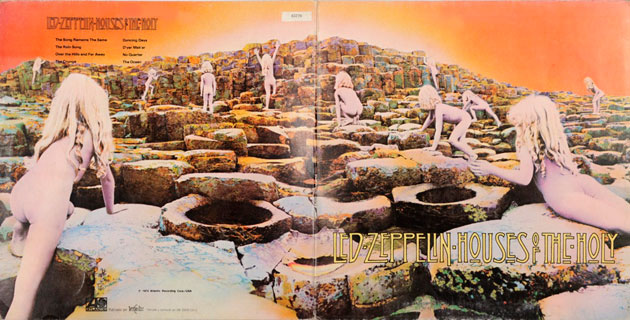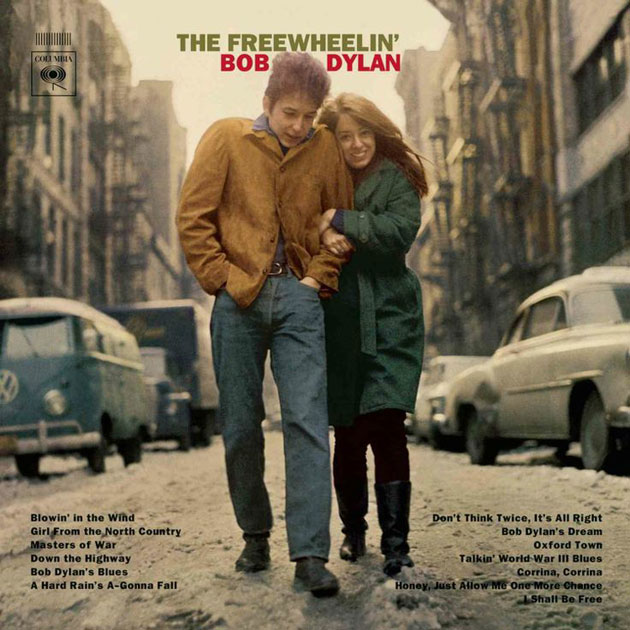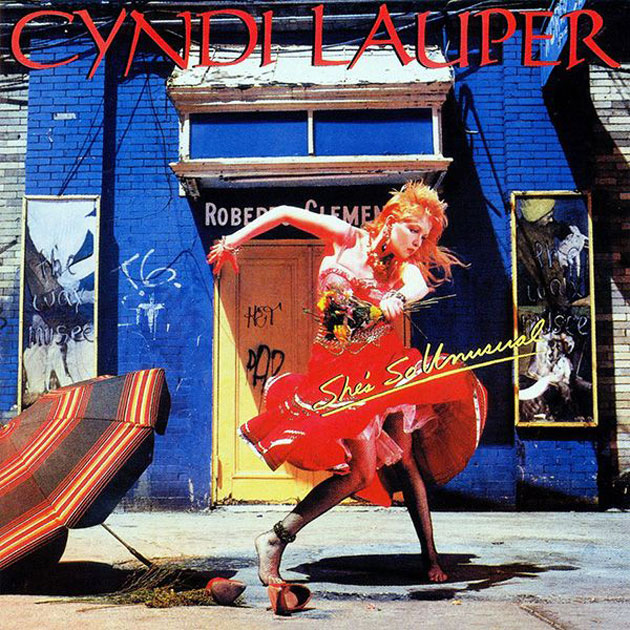Nostalgia: 7 Iconic Album Covers

Even with vinyl making a comeback, we’ll likely never see the creativity that came to define classic album covers of the 1960s, 70s and early 80s. Here are seven of our favourites – and the stories behind their creation.
Whether it was the innovation of Andy Warhol on The Rolling Stone’s Sticky Fingers or the simple cut and paste method used for a pair of Beatles albums, there was always something new that made that first listen that much sweeter.
Here, seven of the most incredible album covers and the stories behind their creation.
Pink Floyd: Wish You Were Here (1975)
The idea for Pink Floyd’s Wish You Were Here album cover came from designer team Storm Thorgerson and Aubrey Powell.
After a discussion with the band about the insincerity of the music business—a central theme in the album—Storm came up with what Powell called a “mad” idea.
“There was a great expression at that time, ‘Man, I’ve been burnt,’ like ripped off,” Powell recalled in a piece he wrote for The Rolling Stone. “Storm said to me, “Why don’t we set something on fire? What about two businessmen shaking hands, and one of them is on fire.”
After agreeing on the idea, Powell commissioned Hollywood stuntman, Ronnie Rondell, who agreed to be set on fire a number of times.
The shoot took place on the Warner Bros. back lot, where Rondell wore a business suit over a flame retardant suit.
The iconic photo that would make it on the cover was taken on the 15th and final shot, which just happened to be the most dangerous of them all.
“On the 15th time, a gust of wind caught up and blew the fire straight into his face,” Powell wrote. “Immediately, his team jumped on him, sprayed him with extinguishing foam and saved his life. He just got up from that and said, ‘That’s it. I’m never doing this again.’ But I had it in the can.”
The Beatles: Sgt. Pepper’s Lonely Hart Club Band (1967)
The album cover for Sgt. Pepper’s Lonely Hart Club Band was the brainchild of Paul McCartney.
“I did a lot of drawings of us being presented to the Lord Mayor,” Paul explained in Barry Miles’ Many Years From Now, “with lots of dignitaries and lots of friends of ours around, and it was to be us in front of a big northern floral clock, and we were to look like a brass band.”
Once in the hands of pop artist, Peter Blake, the concept took form. Each Beatle was asked for a list of men and women throughout history they’d like to appear with on the cover, which would resemble a large group photo.
True to form, John Lennon’s requests pushed the envelope as he included Jesus, Gandi and Adolf Hitler on his list. All three would be nixed to avoid controversy.
Among the stars included on the iconic cover were Mea West, Shirley Temple and Fred Astaire.
Leo Gorcey, who starred in the Bowery Boys films would have been included had he not requested a fee of $400 for his likeness.
The Beatles: Revolver (1966)
Long time friend and fellow musician to The Beatles, Klaus Voorman designed the cover of Revolver after he heard the band play the final track on the album Tomorrow Never Knows.
“They were being so avant-garde,” Voorman once said. “I thought the cover has to do the same thing. How far can I go? How surreal and strange can it be?”
In addition to pasting photos of the Beatles into the artwork, he used a pair of eyes and lips from a magazine for George Harrison’s face, giving him a particularly piercing quality.
The Rolling Stones: Sticky Fingers (1971)
Famed artist Andy Warhol designed the cover for the Rolling Stones’ second album, Sticky Fingers, in which he featured a jean bulge equipped with a working zipper.
When unzipped, it revealed a portion of yet another crotch shot of a model in his tighty-whities.
Contrary to popular belief, Mick Jagger was not featured in either photo.
Although two men have identified themselves in each of the photos respectively, Warhol himself never confirmed who it was.
Glenn O’Brien, the editor of Warhol’s Interview magazine, who claims to be the underwear model, says that Warhol might not have known who he chose either.
“He probably took these Polaroids, put them on the table, and picked ones he liked. I don’t think it mattered to him [who it was],” O’Brien told the New York Post. “I don’t know if the fact that I was chosen means I was the best endowed or what.”
Led Zeppelin: Houses Of The Holy (1973)

Although the cover for Led Zeppelin’s Houses of The Holy appears to feature several naked golden-haired children, the shoot only required two child models, Stefan Gates and his older sister Samantha Gates.
Stefan, who went on to become an author and television personality for the BBC says he had no issue with his lack of clothing.
“I used to love being naked when I was that age so I didn’t mind,” he told the Daily Mail. “I’d whip off my clothes at the drop of a hat and run around having a great time, so I was in my element.”
Concerning the album itself, he’s never brought himself to listen to it. “It caries too much significance for me,” he said. “A part of me wants to go out to the Giant’s Causeway with a big pair of speakers, strip naked and play it just to see if I have some kind of great epiphany.”
Bob Dylan: The Freewheelin’ (1963)

The photograph on the cover of The Freewheelin’ is of Bob Dylan and his then girlfriend Suze Rotolo walking through New York’s Greenwich Village.
With his hands jammed in his pocket and his shoulders raised, Dylan might appear standoffish in the photo but it was actually the frigid conditions of the February shoot that made Dylan seem indifferent to Rotolo as she clings to his arm.
In fact, Rotolo was Dylan’s first love and the inspiration behind many of his early songs like “Don’t Think Twice, It’s All Right,” “Boots of Spanish Leather” and “Tomorrow Is a Long Time.”
She also inspired him politically. As a member of CORE (The Congress of Racial Equality), Rotolo would often bring Dylan to the group’s meetings, sparking his interest in the civil rights movement.
She even told him the story of the brutal 1955 murder of Emmett Till, which inspired Dylan to write the protest classic, “The Death of Emmett Till.”
“I think it’s the best thing I’ve ever written,” Dylan said of the song at the time.
Cyndi Lauper: She’s So Unusual (1983)

The photograph on the cover of Cyndi Lauper’s She’s So Unusual was shot in Coney Island in front of a derelict wax museum.
Not only did the singer pick out the locale for the shoot, she also picked out the vintage dress, which she purchased from a thrift shop where she was employed.
The iconic photo was taken by Annie Leibovitz but Lauper was responsible for adding a little drama to the shot.
“[They] kept saying, ‘Oh, pick up your skirt; pick up your skirt,'” Lauper recalled in an interview with Refinery 29. “We were playing the music and dancing to the music from the album. But, I didn’t really want to, like, pick up the skirt, in a coy, innocent way. I wanted to show movement, to dance. Have fun.”